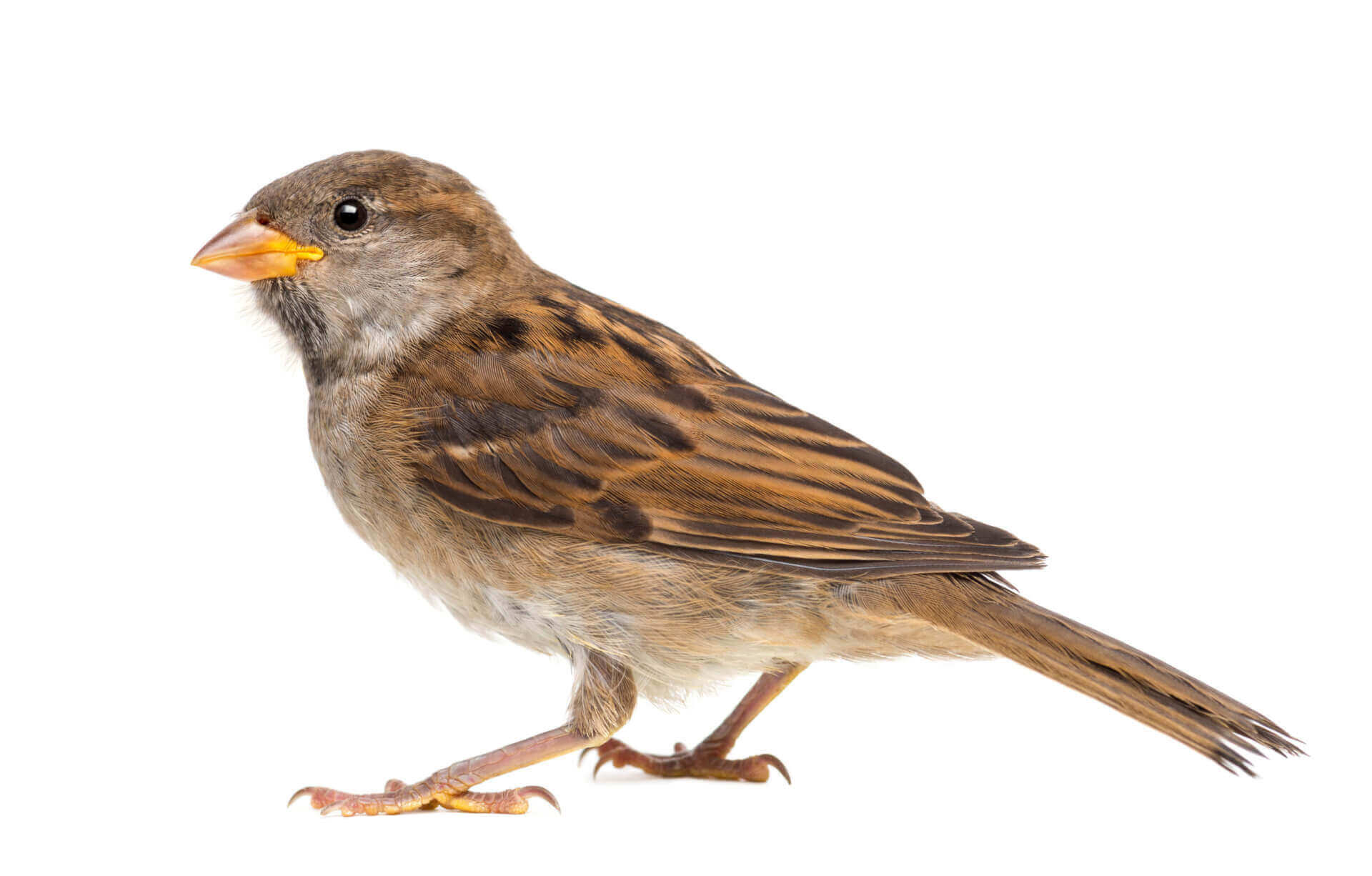Sparrow Facts & Information
Everything you need to know about sparrows
what do Sparrows look like

Male sparrows feature a black throat, a black V-shape patch on the breast, and a dark gray tail and crown. Females have the similar pattern but with duller brown and tan colors throughout. You can also recognize house sparrows by their song. They emit a series of single-note chirps.
Breeding typically begins in March for house sparrows, allowing them to claim nesting spots before native birds arrive during spring migration, and can continue until August. A pair of mated sparrows may raise up to four broods each year, with as many as six eggs at a time. Exponential population growth has allowed these birds to expand their range across North and Central America. You want to make sure to have someone come in and humanely deter the birds from hanging around you home or business without doing them harm. You don’t want to hurt the birds, so a bird exterminator is not what you want or need.Not the bird you have?
Breeding typically begins in March for house sparrows, allowing them to claim nesting spots before native birds arrive during spring migration, and can continue until August. A pair of mated sparrows may raise up to four broods each year, with as many as six eggs at a time. Exponential population growth has allowed these birds to expand their range across North and Central America. You want to make sure to have someone come in and humanely deter the birds from hanging around you home or business without doing them harm. You don’t want to hurt the birds, so a bird exterminator is not what you want or need.Not the bird you have?
where do sparrows live
Sparrows are highly opportunistic. House sparrows are surprisingly aggressive, ousting native species. from their nests. They have also been known to destroy the eggs of competing species, while threatening or even attacking the adults. The house sparrow lacked a natural predator when it arrived in North America, and several characteristics contributed to its population explosion in this country. House sparrows typically live in or near human communities or sites where humans cultivate, a pattern that benefits these birds enormously by providing additional sources of food and sites for nesting.
Generalists in terms of their diet, house sparrows are able to thrive on a range of foods, including grains, seeds (both wild and those provided at feeders), scraps from humans, insects, and spiders (while rearing young) and, less frequently, fruit, berries, and vegetables. Human structures also provide cavities and niches that are preferred nesting sites for this species. House sparrows are both hardy and aggressive. They begin nesting in late winter or early spring, often before migrants have returned, which results in migrant birds having fewer choices for nesting sites. House sparrows typically raise two clutches of three or more chicks (most often four to five) each breeding season.
Generalists in terms of their diet, house sparrows are able to thrive on a range of foods, including grains, seeds (both wild and those provided at feeders), scraps from humans, insects, and spiders (while rearing young) and, less frequently, fruit, berries, and vegetables. Human structures also provide cavities and niches that are preferred nesting sites for this species. House sparrows are both hardy and aggressive. They begin nesting in late winter or early spring, often before migrants have returned, which results in migrant birds having fewer choices for nesting sites. House sparrows typically raise two clutches of three or more chicks (most often four to five) each breeding season.
how did i get sparrows
The house sparrow, also known as the weaver finch or English sparrow, typically live near humans because it provides them with some security from natural predators. They commonly scavenge food around open air eating establishments, parking lots, and on roads, but also eat seeds and seedlings, buds, flowers, vegetables, and maturing fruits. If you have any of those things around your home or business, you can be sure that sparrows will be around. Obviously bird baths and bird feeders will also attract them and many other birds. If you have those things, though, we assume you are looking to attract birds – not mitigate them.
what Problems do sparrows cause
House sparrows can cause considerable damage to soffits, facia boards, and even utilities and air conditioning units. They are aggressive toward other birds as well. If you have sparrows in a bird bath, you’ll notice them pushing the other birds out. House sparrow droppings are not only unsightly, but their waste is associated with over 29 diseases. The World Health Organization reports that birds are the principal hosts for viruses associated with eastern and western equine encephalitis, St. Louis encephalitis, West Nile virus, and even some influenza viruses. When the temperatures drop, frozen droppings can be a slip and fall hazard as well. We can help with bird control around your home or business with our bird treatments.
how can i prevent sparrows
Preventing house sparrows is better left to the professionals. There are many exclusion techniques that can be used that are humane and will only encourage the birds to move alone – not hurt them. You can discourage house sparrows by promptly removing food scraps and open trash as well as having a professional exclusion expert close up openings around buildings as small as ¼”. Also, be sure to keep your trash can lids tightly secured. That will not only help with birds, but will help with rats, mice, flies, cockroaches, and a few others that are attracted to the natural odors trash can emit.
WHY WESTERN for sparrow control
We’re passionate about controlling birds around your home or business because we live and work here – it’s our neighborhood, too. With our almost 100 years of experience keeping homes and businesses in Connecticut, Delaware, New Jersey, New York, and Pennsylvania safe from pests, Western has the experience you can trust.
100% Satisfaction Guarantee
24-Hour Guaranteed Response
Board Certified Entomologists
Need help with sparrows?
GET MY QUOTE
